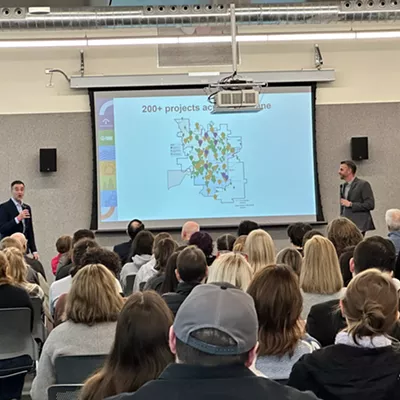Monday, May 11, 2015
Three possible ways to get more affordable housing in Spokane
In this week’s paper, we wrote about how despite cheap rents in Spokane County tens of thousands of residents shell out more than half their income in rents.
But what about solutions?
Matthew Cardinale, a Gonzaga University law student, thinks he has some. Earlier this spring, he completed a 118-page report on Spokane’s affordable housing situation and possible solutions as part of a research project on behalf of Councilwoman Candace Mumm that was supervised by Assistant City Attorney Mike Piccolo.
The report offers several solutions, including an ordinance that would require the Community, Housing and Human Services Department to issue an “Affordable Housing Impact Statement” for any legislation that will estimate its impact on Spokane’s stock of affordable housing. Austin, Texas, and San Diego, California, already have similar policies in place and Cardinale says they could go a long way toward preserving affordable housing in Spokane.
“[City Council] would have to be confronted with a statement every single time they change something,” says Cardinale.
Also included in his report is a recommendation that the city implement “inclusionary zoning,” which is basically a requirement that new building projects involving 25 units or more make 10 percent of them affordable to households making less than 30 percent of the area median income. To sweeten the deal for developers, his report recommends allowing buildings to exceed density requirements if they build more affordable housing.
“I think this is a great way to produce more affordable housing units because we are baking in those affordable housing units as we go,” says Cardinale, noting that Seattle might be in a different position had it adopted this approach before rents started skyrocketing. “It’s really appropriate for Spokane because we do expect more growth.”
Lastly, Cardinale recommends amending the city’s Multi-Family Property Tax Exemption program to spur the creation of more housing for low-income renters. He says that the tax exemption currently benefits developers producing housing for individuals with incomes at 80 percent of area median income. Cardinale says that individuals in this income bracket can afford market rates. Instead, he says, the tax credit should be used to incentivize building units for people making 30 percent or below the area median income because that’s where the need is greatest.
“We are giving away tax revenues to the tune of 12 years for the production of units that are close to or above market rate,” he says.
Tags: Matthew Cardinale , News , Image


















